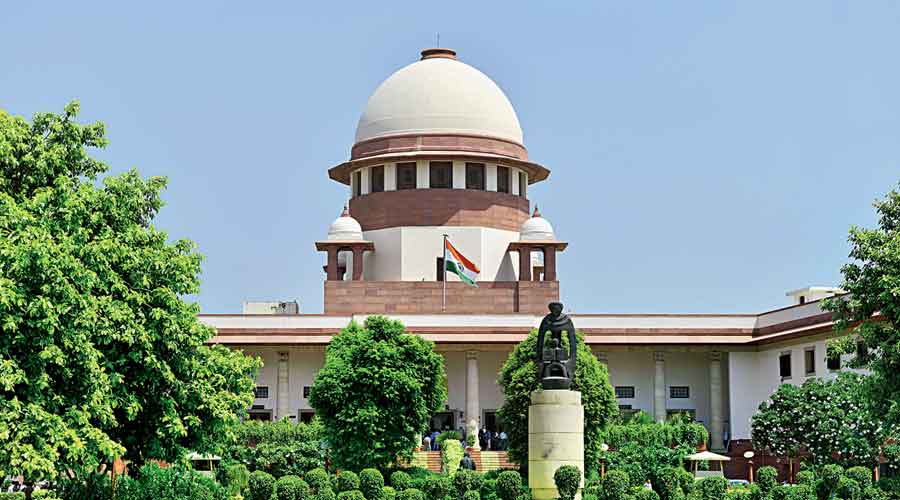A Division Bench, comprising Justice Prinsep and Justice O’Kinealy of the Calcutta High Court, on 29 June 1883 delivered a landmark verdict in [138] Appellate Civil Case between Nimai Chand Koyal vs Hurry Churn Dass & others.[1] The judgment had profound social significance and cultural ramifications. Her father gave Dayamoyee, a childless widow, in marriage a second time, in conformity with the prevailing social custom, and she bore two sons. On the death of her father, her claim to succeed to her father’s property as the heir was disputed by his brother. On being proved that “marriage of widows was a custom amongst the Nomosudras” (now spelt as Namasudra), the caste to which the parties belonged, the Calcutta High Court held that such custom was valid, and that she was entitled to succeed as heir to her father under the Hindu law.
Despite being a watershed, the case sadly remained beyond the frame of conventional discourses and historiography. A study and analysis of the case throws up many intricate socio-cultural visages of contemporary Bengal against the backdrop of the overhyped renaissance of 19th-century Bengal.
Who was Dayamoyee?
Dayamoyee was a native of Tamralipta (presently Tamluk) in Midnapur district. The case filed against her had taken the meandering route – from her native village to the Calcutta High Court via the courts of munsif in Tamluk and of the subordinate judge in Midnapur. For an illiterate “untouchable” woman, it was a long and arduous journey. Undaunted, the tenacious Dayamoyee fought legal battles dexterously to defend her right of inheritance as a widow enshrined in the extant law. The munsif in Tamluk and the sub-judge in Midnapur had rejected her pleas for her right to inherit her father’s property and declared her remarriage as illegal which was intended to render her two sons as illegitimate. Decisions of both the lower courts presided over by native magistrates were perverse and untenable. Overpowering orthodoxy and domineering feudal influences had vitiated and incapacitated the vision and faculties of both the presiding officers for appreciation of the objective of the extant law. Justice was denied to the woman, compelling her ultimately to rush to the Calcutta High Court for redressal of her grievances. This was decidedly a historic struggle, leading to crowing victory for Dayamoyee.

The case of Dayamoyee
Dayamoyee’s father was Radha Mohan Dass. She became a childless widow while her father was still alive. Her father gave her in marriage a second time, she submitted before the court, in conformity to the custom of her caste in vogue since time immemorial. She had two sons, Chandra Mohan and Tara Chand, from her remarriage. Dayamoyee’s contention before the Calcutta High Court was that she was the only child of Radha Mohan Dass, and as she was a widow daughter having sons of her own, she was the only heir to her father. The property in question was the land that Radha Mohan Dass left behind when he died in 1284 BS (1878).
Sadananda Dass, Radha Mohan’s brother, claimed that he was the only heir and sold the disputed land to one Nimai Chand Koyal on 5 April 1880. Dayamoyee successfully resisted the efforts of the purchaser when he went to take possession of the land. According to the High Court, Sadananda Dass sought to recover possession and profits after declaration of his title. The court of munsif in Tamluk had decreed in favour of Nimai Chand Koyal, the plaintiff. An aggrieved Dayamoyee first challenged the munsif’s order before the subordinate judge in Midnapur, who upheld the verdict of the munsif. Dayamoyee then approached the Calcutta High Court. Madhub Chunder Chuckerbutty was the munsif of Tumluk and Kedar Nauth Mozoomdar, the sub-judge of Midnapur. The munsif delivered his verdict on 25 November 1881 and the subordinate judge on 26 July 1882.[2]

The bench heard the appeal of Dayamoyee and declared their judgment on 29 June 1883. The plaintiff alleged before the Bench that “Dayamoyee became a widow during the lifetime of her father, and that Chandra Mohan and Tara Chand are her natural sons [meaning illegitimate child], and that they are, therefore, not entitled to succeed”. The plaintiff thus insinuated against and smeared the moral character of Dayamoyee and challenged her remarriage altogether though such remarriage was sanctioned by both custom as well as by law.
“Dayamoyee admits,” noted the High Court, “that she became a childless widow during her father’s lifetime, but she asserts that among her caste people, widow marriage is in vogue from time immemorial, and that she was given in marriage a second time by her father, and that Chandra Mohan and Tara Chand are children of her remarriage. She contends, therefore, that she is a widow daughter having sons of her own, and is, therefore, the only heir to her father.”
The Division Bench was seized with the most critical issue for the verdict: “Whether widow marriage is a sanctioned custom among the Nomosudras and if so, is it a valid marriage.” Dayamoyee, the defendant was a Nomosudra, an “untouchable” caste of Bengal. The Bench found that the munsif had “fixed” this issue. This issue was very relevant in the given case. The Bench further observed that Madhub Chunder Chuckerbutty relied on issues immaterial to the case. The case warrants analysis in broad social perspective: Were the munsif and subordinate judge predisposed in the face of social custom and law to pass the order against Dayamoyee?
The munsif accepted and recognized that the custom of widow marriage “was in vogue amongst the Nomosudras.” Nevertheless, he arrived at an erroneous decision swayed by immaterial issues and factors.. The munsif “came to the conclusion that the marriage was not a valid one as its recognition depended upon payments of money to (1) the zamindar, 2) the barber, (3) the Brahman and (4) the village headman”.
The monetary payments to zamindar, barber, Brahman and village headman were ‘salamis’ – euphemism for payments and other favours extracted by representatives of the State and landlords from the rural folk. These were not only illegal but also immaterial and therefore, extraneous factors for validity of widow marriage among the Namasudra caste. The Calcutta High Court had already declared these exactions illegal in Chulton Mahton versus Tilakdhari Singh & others (11 Cal. 175). [3]
These salamis was not exacted by zamindars in Midnapur only. The bloodthirsty feudal class indulged in mindless exaction from their tenants all over Bengal, Bihar and Odisha. These were simply illegal. More often than not the zamindar, Brahman and village headman could be one and the same person, who pocketed the entire money extracted as salami. Feudalism had spread its tentacles and embraced every aspect of life for illegal gains, leaving little breathing space for the masses. The munsif and subordinate judge had blindly pandered to the feudal interests and instincts.

The preamble to the Hindu Widows’ Remarriage Act, or Act XV, 1856 describes the state of affairs which necessitated the Act: The Hindu widows, with certain exceptions, “are held to be, by reason of their once married, incapable of contracting a second valid marriage, and the offspring of such widows by any second marriage are held to be illegitimate and incapable of inheriting property”.[4] These limitations of ancient Hindu law had turned society into a stagnant pool, emitting offensive stench that spread far and wide and polluted the entire social, judicial and administrative fabric. The dominant social attitude the Hindus nursed against their widows was hostile and offensive, if not immoral. This attitude was uncompromising and unyielding.
Institutional framework defied by vested interest
Act XV, 1856 received assent of Governor General of India Viscount Canning on 26 July 1856. The objective of this Act was “to remove all legal obstacles to the marriage of Hindu widows”. Two sections of the Act were path-breaking, given Hindu society in the 19th century, was steeped in the abyss of ugliest orthodoxy.
Section 1 of the Widow Marriage Act envisaged that,
“No marriage contracted between Hindus shall be invalid, and the issue of no such marriage shall be illegitimate, by reason of the woman having been previously married or betrothed to another person who was dead at the time of such marriage, any custom and any interpretation of Hindu law to the contrary notwithstanding.”[5]
This was an important milestone as a legal safeguard for the widow against enforcement of customary unwritten Hindu laws. Unfortunately, social attitude and mindset rarely changes. Orthodoxy invariably triumphs and vanquishes reason, enlightenment and above all, humanism.
Section 5 of the Act further announced that
“… a widow shall not, by reason of her re-marriage, forfeit any property, or any right to which would otherwise be entitled, and every widow who has remarried shall have the same rights of inheritance as she would have had such marriage been her first marriage.”
By this provision, the law guaranteed the right of inheritance to the widow who remarried. This provision gave her the protection she most critically needed to enter a remarriage. A careful study of the order by Munsif Madhub Chunder Chuckerbutty in the light of the aforementioned provision and the appreciation and analysis in the judgment by the Calcutta High Court, leaves one with no doubt that he acted against the letter and spirit of law in the statute book. No zamindar, no barber, no Brahman or no village headman was entitled under the Act to receive or claim any monetary payment from Dayamoyee to lend validity of her marriage. This was simply “blackmail” by the feudal class.
British rulers, in general, were of the opinion that native judges lacked judicial uprightness and impartiality to adjudicate cases. The Munsif and Sub-Judge in question were just two examples. Feudal influence and prejudice derailed the course of justice. In the 19th century, feudalism, marked by exploitation of tenants under the zamindars, had invaded every sphere of Indian life.
References
[1] I. L. R.10 Calcutta 238 Hurry Churan Dass & Others vs Nirmal Chandra Koyal quoted by Sipra Biswas in Anweshan (Bengali), Calcutta, 1996, pp. 295-296, and Appendix 6.
[2][138] Appellate Civil 29th June 1883 quoted by Sipra Biswas in Anweshan (Bengali), Adal Badal Patrika, Calcutta, 1996, pp. 350-354.
[3]I. L. R. 11 Cal. 176.
[4] Subal Chandra Mitra, Isvar Chandra Vidyasagar, Rupa & Co., December, 1902, Reprint 2008, op. cit., p. 229.
[5] Mitra, Ibid., p. 230.
[6] Mitra, Ibid., p. 232.
Copy Editor: Anil
Content Editor: Goldy
Forward Press also publishes books on Bahujan issues. Forward Press Books sheds light on the widespread problems as well as the finer aspects of Bahujan (Dalit, OBC, Adivasi, Nomadic, Pasmanda) society, culture, literature and politics. Contact us for a list of FP Books’ titles and to order. Mobile: +917827427311, Email: info@forwardmagazine.in)







